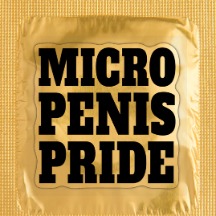One of the reasons human biology is so interesting is because it’s so complex; rarely are there neat answers.
We’re often taught that when it comes to biological sex, everything fits into two boxes: XY and XX. However, it turns out that, just like the rest of biology, things are a little more complicated than that.
Some people not have chromosomes or sexual characteristics that neatly fit into those two boxes. These people have disorders of sex development (DSDs), also known as differences of sex development or intersex conditions. Due to the taboo nature of the subject and differing opinions of what qualifies as a DSD, it's hard to pin down exactly how many people have DSDs—estimations have ranged between 0.05% and 1.7%of the world’s population.
Before we start discussing the details, let’s define some terms that often come up in discussions of sex:
Sex determination refers to the chromosomes an individual has—typically XX or XY.
Beyond Just XX or XY: The Complexities of Biological Sex
Health


H
ermaphroditus, see link in notes.


H
ermaphroditus, see link in notes.
Sex differentiation refers to the anatomical development of reproductive systems—for example, people with XX chromosomes tend to have cervixes, vaginas, uteruses, etc.
Gender refers to the “norms, behaviors, and roles” typically associated with femininity and masculinity. Gender pertains more to culture than biology, so we won’t discuss it here.
Those definitions limit humans to one of two options, but as we said before, biology tends to be complicated!
Read More
Notes: In the art of the Hellenistic and Roman periods, the intersexual deity is often depicted in explicitly erotic and even seductive poses, with exposed breasts and male genitals.
Hermaphrodite in African Art
Lega
Dogon
Gender refers to the “norms, behaviors, and roles” typically associated with femininity and masculinity. Gender pertains more to culture than biology, so we won’t discuss it here.
Those definitions limit humans to one of two options, but as we said before, biology tends to be complicated!
Read More
Notes: In the art of the Hellenistic and Roman periods, the intersexual deity is often depicted in explicitly erotic and even seductive poses, with exposed breasts and male genitals.
Hermaphrodite in African Art
Lega
Dogon
Advertisers | Contact Us | Events | Links | Media Kit | Our Company | Payments Pier
Press Room | Print Cover Stories Archives | Electronic Issues and Talk Radio Archives | Writer's Guidelines






